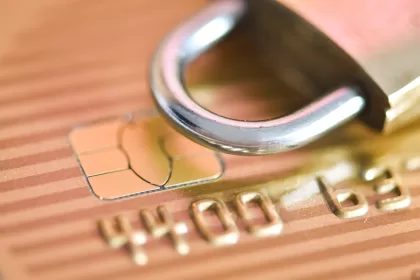Picture this: You wake up one morning to discover that your identity has been stolen, and your hard-earned money is being drained by a faceless thief. Terrifying, right? Unfortunately, this nightmare scenario is becoming all too common. In 2024, cases of identity theft are soaring, with around 4 Billion lost to cybercrime each year in the United States alone.[1] It’s time to take control of your financial destiny, and that starts with understanding the power of a credit freeze.
Table of Contents
Identity Theft & Fraud Key Statistics (2024):
- Approximately 30% of the U.S. population has experienced identity theft. Source
- More than 300,000 Americans are targeted by phishing, vishing, or smishing attacks annually. Source
- The U.S. witnesses over 50,000 individual personal data breaches each year. Source
- A staggering 87% of individuals expose their personal information online. Source
- Individuals aged 30-39 are the most frequently targeted age group among identity theft victims in the United States. Source

Understanding a Credit Freeze:
Let’s break it down. Freezing your credit is a proactive step that restricts access to your credit reports and in turn the opening of new accounts in your name. By restricting access to your credit information, it’s considerably more challenging for identity thieves to open new credit lines using your personal information.
Your credit report is a snapshot of your financial history, your credit score is your financial report card, and credit inquiries are the footprints of anyone checking on your financial health. Now, imagine a force field around this crucial information – that’s a credit freeze. It bars unauthorized access, making it a fortress against identity thieves. A credit freeze (or security freeze) can impact various aspects of your financial life by restricting access to your credit reports. Here are some specific effects of a credit freeze:
- New Credit Applications: A credit freeze prevents new creditors from accessing your credit reports. If someone tries to open a new credit account in your name, the creditor won’t be able to check your credit history, making it more challenging for fraudulent accounts to be opened.
- Credit Checks for Employment: Employers often check credit histories as part of the hiring process. With a credit freeze, potential employers cannot access your credit report without your permission.
- Rental Applications: Landlords and property management companies may review your credit history as part of the rental application process. A credit freeze restricts their ability to do so unless you provide authorization.
- Insurance Premiums: Some insurance companies use credit information to determine premiums for auto and homeowners insurance. A credit freeze may affect their ability to access this information.
- Cell Phone Contracts: Providers of mobile phone services may check your credit before offering you a contract. With a credit freeze, they might be unable to access your credit information.
- Utilities Services: Companies providing utilities, such as gas, electricity, or water, may check your credit when establishing a new account. A credit freeze could impact their ability to access your credit information.
- Prescreened Offers: Creditors and insurers use credit reports for prescreening offers of credit or insurance. With a credit freeze, you may not receive these prescreened offers.

Will a Credit Freeze Affect My Existing Accounts?
A credit freeze doesn’t affect your existing credit accounts. You can continue to use your credit cards and loans as usual.
How Does a Credit Freeze Affect My Credit Score?
It’s important to note that a credit freeze doesn’t impact your credit score, and it doesn’t prevent you from accessing your own credit reports. Additionally, you can temporarily lift or remove the freeze when you want to apply for new credit or services by using the PIN or password provided during the freeze process.
Planning Ahead to Temporary Lift The Credit Freeze
While a credit freeze is an effective tool to protect against identity theft, it’s essential to plan ahead and temporarily lift the freeze when you need to authorize credit inquiries for legitimate purposes.

Step-by-Step Guide to Freeze Your Credit
Now, let’s get practical. Equifax, Experian, and TransUnion – your credit protectors. Here’s how to initiate a freeze with each:
Step 1: Gather Necessary Information
Before you start the credit freeze process, gather essential information such as your Social Security number, date of birth, and other personal details.
Step 2: Choose Credit Bureaus
You need to contact each of the three major credit bureaus individually to freeze your credit. These bureaus are Equifax, Experian, and TransUnion. Freezing your credit with all three is recommended for comprehensive protection.
Step 3: Equifax Credit Freeze
- Visit the Equifax credit freeze page: Equifax Freeze Page. Or you can call 1-800-349-9960. You can also freeze your credit by mailing in a request or visiting a physical TransUnion branch.
- Click on “Place, temporarily lift, or permanently remove a security freeze.”
- Follow the on-screen instructions to provide the necessary information.
- You will be given a PIN or password. Keep this information safe, as you will need it to lift or remove the freeze in the future.
- Processing Time: Usually processed within 24 hours.
Step 4: Experian Credit Freeze
- Visit the Experian credit freeze page: Experian Freeze Page. Or you can call 1-888-397-3742. You can also freeze your credit by mailing in a request or visiting a physical Experian branch.
- Click on “Add a security freeze.”
- Create an account or log in if you already have one.
- Follow the on-screen instructions to complete the freeze process.
- Save or write down the PIN provided for future reference.
- Processing Time: Usually processed within 24 hours.
Step 5: TransUnion Credit Freeze
- Visit the TransUnion credit freeze page: TransUnion Freeze Page. Or you can call 1-888-909-8872. You can also freeze your credit by mailing in a request or visiting a physical TransUnion branch.
- Click on “Add a security freeze.”
- Create an account or log in if you already have one.
- Follow the on-screen instructions to complete the freeze process.
- Save or write down the PIN provided for future reference.
- Processing Time: Usually processed within 24 hours.
Step 6: Save Documentation
After completing the freezes with all three credit bureaus, make sure to save all documentation, including confirmation emails, PINs, and any other relevant information.
Step 7: Monitor Your Credit
Regularly monitor your credit reports for any suspicious activity. You are entitled to a free annual credit report from each bureau, which you can request through AnnualCreditReport.com.
Step 8: Lift or Remove Freeze (When Necessary)
If you need to apply for credit or loans, you can lift or remove the freeze temporarily. Use the PINs or passwords provided by each credit bureau to do this.
Lifting a Credit Freeze
Life doesn’t stop, and neither should your financial flexibility. Here’s how to temporarily lift the freeze:
- Log in to the respective credit bureau’s website.
- Navigate to the “Lift Freeze” section.
- Specify the time duration you want the freeze lifted.
- Provide any additional requested information.
- Confirm and wait for the temporary lift to take effect.
For a permanent lift:
- Follow the same initial steps.
- Choose the permanent lift option.
- Confirm your decision.
- Your credit is now permanently accessible.
Tips and Additional Resources:
Don’t let PINs and passwords become a puzzle. Store them securely. For monitoring, tools like Credit Karma or IdentityForce can help. Additionally, consider using two-factor authentication for added security. Check out resources like the Federal Trade Commission (FTC)—this government agency has a special section dedicated to advising consumers about all aspects of identity theft—and IdentityTheft.gov for comprehensive information.

What to do if you believe you are a victim of identity theft?
If you find yourself in this unnerving situation, it’s essential to take immediate action. In this article, we’ll walk you through some casual yet professional steps to help you recover from identity theft.
- Stay Calm and Take Control: Discovering identity theft can be overwhelming, but staying calm is crucial. Take control of the situation by acting promptly and methodically.
- Reach Out to Law Enforcement: Begin by reporting the incident to your local police department. Secure a copy of the police report – a valuable document that may be needed for subsequent steps.
- Alert Credit Bureaus: Place a fraud alert on your credit reports with major credit bureaus like Equifax, Experian, and TransUnion. This simple step can help prevent further unauthorized account openings.
- Thoroughly Review Credit Reports: Request and review your credit reports for any suspicious activities. Dispute unauthorized transactions promptly with the credit reporting agencies.
- Contact Financial Institutions: Notify your banks and credit card companies about the identity theft. Swiftly close any accounts that have been tampered with or fraudulently opened.
- File a Complaint with the FTC: Head to the Federal Trade Commission’s (FTC) website to file a complaint and generate an Identity Theft Report – a useful tool for resolving fraudulent accounts.
- To report identity theft, visit IdentityTheft.gov – the federal government’s comprehensive platform for reporting and recovering from identity theft. It offers step-by-step guidance and handy resources, including printable checklists and sample letters.
- To report fraud, scams, or bad business practices, consumers should go to ReportFraud.ftc.gov.
- Reinforce Online Security: Strengthen your online security by changing passwords, especially for financial accounts. Consider enabling two-factor authentication for an extra layer of protection.
- Stay Vigilant with Account Monitoring: Regularly monitor your financial statements and credit reports for unusual activity. Report any discrepancies immediately to address them promptly.
- Consider a Credit Freeze: Opt for a credit freeze to restrict access to your credit information. This added layer of security can make it more challenging for identity thieves to open new accounts.
- Contact Social Security Administration: If your Social Security number is compromised, get in touch with the Social Security Administration to report the issue promptly.
- Update Personal Information: Ensure your personal information, such as your address and phone number, is up-to-date with relevant authorities.
- Seek Professional Guidance: For personalized advice, consider consulting with a legal professional or financial advisor to navigate the specific nuances of your situation.
The Bottomline
In a world filled with uncertainties, freezing your credit is the anchor that keeps you secure. As we wrap up this insightful journey, remember – your financial safety is in your hands. Take charge, freeze your credit today, and let 2024 be the year you fortify your financial fortress. Your future self will thank you!
FOOTNOTES:


